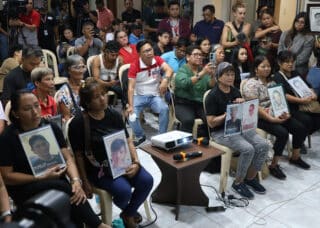On the average day, there are dozens to hundreds of opportunities during which fellow Filipinos request our aid. On the way to work, we see young children or the aged ask for help, knocking on car windows and waiting by stoplights. Many have small cardboard signs explaining the situation: that they were laid off work. That they had to sell their jeepney to pay for hospital bills. That their relative is sick and they have no more money for food or medicine.
Then the moment we log on to social media, there are cries for help everywhere. There’s always a worthy cause on one’s social media feed. We can probably trace each natural and political disaster of 2020 by just compiling a list of donation drives: for masks, food and supplies since the Taal Volcano eruption; for personal protective equipment and food at the start of the COVID-19 pandemic; for jeepney and tricycle drivers put out of work because of COVID-19-related restrictions; for those confronted with catastrophic hospital expenses because of the coronavirus; for laptops and smartphones for students struggling to complete their coursework. More recently, there are so many donation drives for victims of typhoons “Rolly” and “Ulysses” that one hardly knows which one to contact first.
It’s a lot to take in. Sometimes, too, it’s not faceless strangers asking for help, but family members and friends messaging us to ask for a little money to make it through.
With cries for help ringing in our consciousness every day, Filipinos help out. Call it a spirit of bayanihan, or just plain and simple human decency. It’s impossible to be witness to so much suffering and not feel the urge to help. Sometimes it stuns me how much donations can be raised. A handful of friends from college put up a community called “Angels Today,” which raised over P1 million for personal protective equipment at the start of quarantine, and which has consistently organized Sunday food drives since; they’re now mobilizing to meet the new challenge of the twin typhoons. A K-pop fanbase of a local province has raised over P200,000 in two days to help flood victims. I could go on and on. These donations are coming from somewhere, and they frequently come from people like myself or the reader: just ordinary persons who are part of the workforce, with fair to middling incomes, and who must sustain their needs while putting part of our budgets into donations, because to forever ignore the cries for help is unthinkable. Perhaps this is why it rankles to consistently be asked on the hostile platforms of social media: “Ano’ng ambag mo?” It’s a nonsensical cheap shot in the arsenal of internet trolls, an easy and thoughtless response to cries of outrage and calls for change in government. As we’ve all predicted, top management has little intention of meeting our (already low) expectations on effective and organized leadership, resource management and disaster response for the last two weeks. Yet the moment that Filipinos express their frustration, we are met with fallacies and ad hominems, even from the President himself: one recalls how, in April 2020, he lashed out at critics of the pandemic response with “What have you done for the country except to talk and criticize?”
As it turns out, we have done plenty, and have been doing so since the first ash fall from Taal. Donors and private organizations have been sustaining relief efforts and needs of families and individuals for a long time now, and donor fatigue is setting in. Every GCash transfer, every donation handed out through our car windows—all of it could have been rendered unnecessary or at least reduced by a functioning, efficient, uncorrupted government, plus the sweeping budget we were promised to handle the pandemic. The fact is that frontliners who barely make beyond minimum wage, and ordinary citizens without cushy incomes, are being asked daily to choose between their savings and expenses versus helping out the hungry, the sick and the displaced… while mayors party, while national leaders take selfies over aerial views of flooded provinces, while biddings for a government department’s Christmas ham and cheese are set at more than P4 million. Imagine the “ambag” these could have made.
kchuarivera@gmail.com



